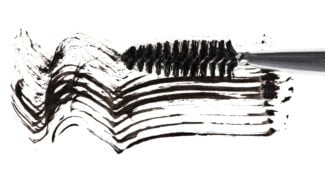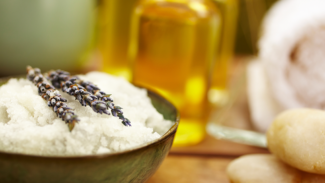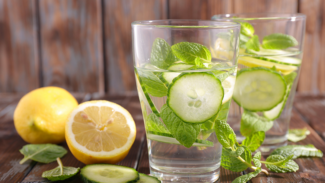Hiya Gorgeous,
Hallelujah—it’s almost summertime! Once the warmer days kick in, I’ll be baring a little more skin than usual (while wearing some trusty SPF). There’s nothing better than puttering around my farmette in tank tops, shorty shorts and Crocs (I don’t care what fashion people say, I love them). And although I enjoy seeing some color on my cheeks this time of year, I know it can come at a cost—especially since I racked up my share of unprotected skin-baking hours in my earlier days. I’d slather on baby oil when my parents weren’t looking and fry myself like an egg on a griddle.
By now we understand that too much of the sun’s UV radiation can cause skin damage and potentially lead to cancer (read my blog on sun safety here). No bueno. So naturally, as we’ve become more savvy about protecting ourselves from these consequences, self-tanners and spray-on tans have become more popular. All the glow without the sun exposure—sounds like a no brainer, right?
Of course it’s never quite that simple, which is why I did a deep dive on self-tanners for you today. Not that I’m encouraging you to use them (I don’t) but this question has come up a lot, so here we go! We’ve talked in the past about how our skin acts like a sponge and absorbs many of the chemicals in skincare products. These chemicals can be stored in the body over time, and although we don’t know the long term effects of this build up (aka body burden), the things we do know are alarming. Better safe than sorry if you ask me. So how do self-tanners measure up with this in mind?
The Science of Self-Tanners
First, let’s look at the science behind how self-tanners work. Have you ever paused to wonder what could temporarily turn your skin a darker shade? Kinda weird to think about! The active ingredient in most self-tanners and spray-on tans is dihydroxyacetone, also referred to as DHA.
DHA is not a stain or a dye. It’s a sugar that interacts with amino acids and protein particles in the top layer of dead skin cells. This causes a chemical reaction and produces pigment—that “tan” look. The reaction is similar to the way a cut apple will brown when exposed to oxygen in the air. DHA can be manufactured synthetically from sources like glycerin, or it can be derived from natural sources like beet sugar or cane sugar (keep in mind that even though the word “natural” is used here, beet or cane sugar DHA is still DHA).
The Downside of Spray Tans and DHA
So what does the research about DHA safety tell us? It’s important to note that while the Food & Drug Administration allows DHA to be applied externally for skin coloring, it should not be “inhaled, ingested, or exposed to areas covered by mucous membranes including the lips, nose, and areas in and around the eye”. You might think, well duh, I’m not going to eat my self-tanner, but not so fast! Inhalation and ingestion of DHA can be difficult to avoid when you’re dealing with spray-on applications. So for the love of your health, avoid the spray-on tanning booths.
When it comes to applying DHA-containing self-tanner in the forms of cream and lotion, things get a little foggy. Some research shows that DHA does not migrate past the outermost layer of skin, or the “dead skin layer”, while other research shows that DHA can migrate to the living layers of the skin after all, but it’s unclear what happens from there. Even though we don’t have a conclusive answer on this, the following recent research on DHA makes me think twice about exposing my skin to these products (synthetic or natural).
A few years ago, an ABC News investigation reported that DHA has the potential to cause genetic alterations and DNA damage. Concerns were raised by a panel of medical experts, ranging across the fields of dermatology, toxicology, and pulmonary medicine, who reviewed 10 of the most current publicly available scientific studies on DHA, including a federal report ABC News obtained through the Freedom of Information Act. Some of the studies found DHA altered genes of multiple types of cells and organisms. Again, no bueno.
How to Stay Safe While Using Self-Tanning Creams
As with anything, let your common sense be your guide and choose your self-tanner wisely. If you decide to use self-tanner, consider skipping spray tans altogether and limiting your use of creams to special occasions. In addition, use a cleaner formula. Most drugstore and department store varieties contain some pretty nasty ingredients including dyes, harsh synthetics and fragrance in addition to DHA, which can cause reactions, or include known carcinogens and hormone-disrupters. Look for self-tanners that are made with natural and simple botanical ingredients.
For a completely natural, vegan and DHA-free self-tanner, try Haut Cosmetics Caramel Tan. Although I haven’t actually tried this brand, many healthy beauty bloggers I follow recommend it. (Yes, it’s pricey but unfortunately I have not found a more affordable DHA-free option out there—let me know if you have!) The active tanning agent is a natural sugar that berries produce, which has a similar chemical reaction on skin as DHA and creates golden buildable color that doesn’t look orange or streaky.









I’ve heard using coffee grinds mixed with coconut oil. Scrub all over body in tub or shower. Let sit for 5-10 minutes. Rinse off and pat dry. Also helps with cellulite and gives you soft exfoliated skin apparently.
I read that boiling old coffee grounds and water for a few minutes, slathering on and letting sit for 15 minutes gives a temporary tan. Ever heard of this?
how about kiss my face sunscreen? It’s says it is non toxic 🙂
H2o At Home has a chemical free SELF-TANNER and is the ONLY one of its kind with the COSMEBIO certification and is 3rd party certified!! Has NO rub-off , odor and can be applied to build a tan. I LOVE it and it is so natural looking!!! Products range from home cleaning , laundry care, pet care, hair/body and truly organic skincare. The entire product line is 3rd party certified, eco-friendly, easy to use and saves you money!!!! I’m an Oncology Nurse and felt like I hit the lottery when I found this company! I lover you Kris and would love your feedback!!
Hi Michelle!
do you have the list of ingredients for the bronzer? I found the list on a website and DHA from vegetal source is listed as one of the ingredients…
organic aloe vera extract ,glycerin,organic sunflower oil, natural sweet almond oil, carrots extract, natural DHA, natural vitamin E, natural emollient and emulsifier, citric acid
There is NO certified organic DHA.
Although some tanners say the the DHA in them is ecocert, ecocert actually released a statement saying that they haven’t certified any DHA as organic from any manufacturer.
They said:
‘Ecocert has only validated DHA from certain suppliers for its use in organic products certified in accordance with the Ecocert Natural and Organic Cosmetic Standard. This validation is in no way equivalent to a certification as organic and the DHA will not even count as organic in the calculations applicable to the certified products under the Ecocert standard.’
You can read the full statement here:
http://www.ecocert.com/en/ecocert-statement-dha
What about Ava Anderson Non Toxic? Some people are using the BB cream for tanner. They just get a darker color.
Ingredients: active Ingredients – zinc oxide – (non nanoparticle, 10%) titanium
dioxide – (non nanoparticle, 7%)
ingredients – aloe barbadensis (organic aloe vera), vitis vinifera
(organic grape seed) oil, olea europaea (organic olive fruit) oil,
simmondsia chinesis (organic jojoba) oil, butryospermum parkii
(organic shea butter), sesamum indicum (organic sesame) oil,
radish root ferment, camellia sinensis (organic green tea) extract, rose mosqueta (organic rosehip) oil,
xanthum gum, apis mellifera (organic beeswax), oryza sativa (organic rice bran) oil, punica granatum
(organic pomegranate seed) oil
Plus powders for color – argania spinosa shell powder (argan), cocos nucifera shell powder (coconut)
pyrus malus fruit extract (apple), theobroma cacao shell powder (cocoa), rosa gallica flower powder rose
petals), nelumbo nucifera seed powder (lotus flower), ribes nigrum fruit (black currant), citrus aurantium
dulcis peel powder (orange), vaccinium macrocarpon fruit powder (cranberry), and chenopodium
quinoa extract (quinoa)
You can take a look here: http://www.toxicfreecricket.com
Hi, I have never felt self tanners are safe. They are also messy, smell, and you can look ridiculous if you don’t get it right.
I use shimmer moisturizers and oils. There are alot of natural ones out there. In your book you recommended a shimmer body butter. The glow needs to redefined as not tan. Health can give you a glow. I used to take sea buckthorn supplements and remember my skin felt great. Going to try the oil.
What’s wrong with pale pretty porcelain skin? Let’s get unprogrammed. Of course it feels great to lie in the sun and feel that warmth and get some vitamin d, just use sunscreen and or go before 10 or late in the day. Peace, beach umbrellas & cute hats! Thx kris for being u!
When I have visited the Orient, I noticed Asian women with the most flawless skin, carry umbrellas and wear driving gloves to avoid sun damage. Unlike we American women who have so many sunspots and wrinkles, they look much more youthful and suffer less skin cancer. Tanning, whether it is derived from the sun or from the bottle, is an image we have bought into–after watching celebrities and beach bunnies! We don’t have to be bronzed to be beautiful!!! And the older we become, tan skin which resembles leather, is not pretty! Let’s empower and embrace who we naturally are!!!
I love supporting great, toxic free products. Suzanne Somers has a great certified toxin free product
I use Tarte’s self tanner occasionally, is it not good? I thought it was!
TARTE
Brazilliance™ Skin Rejuvenating Maracuja Face And Body Self Tanner
I used Neutrogena’s self-tanner for several years. When I asked my naturopath about my hot flashes, she told me to try stopping the self tanner. I did, and hot flashes disappeared immediately!!
Total fan of ECO TAN. The best natural and organic based self tanner I’ve found.
Eco Tan from Australia uses a cacao derived ingredient to tan the skin. No DHA all organic works a treat! x
I just ordered a bottle of this DHA-free self tanner from ETSY for my Irish dancer daughter. Haven’t gotten/used it yet, but ingredients look very wholesome and much more affordable than Haut Caramel.
https://www.etsy.com/listing/171131049/bronze-babe-self-tanner-for-body-dha?ga_order=most_relevant&ga_search_type=all&ga_view_type=gallery&ga_search_query=natural%20self%20tanner&ref=sr_gallery_14
Did this work? Just found out my 10 yr old will have to use tanner to participate in teams for Irish dance (groan out loud!). I can’t stomach putting harmful chemicals on her skin. I feel like glowing pale legs should be acceptable in Irish dance!!
Has anyone used the Haut products yet?
Hi, thanks for your blog. I am so thankful for this blog…i am using self tanner lotion for many years and very useful. i also giving reviews about self tanners lotions.
Hi Kris, great post! I know what you’re saying about Crocs, although for me it’s my ugly, comfy, and very old Adidas sandals that I look forward to busting out every summer! Just a tip for the readers, if using a self tanner and exfoliating first, try to use an exfoliant that doesn’t use microbeads. Hope that helps!
Hi – Call me crazy, but I do believe that the finger-sized turmeric root that I add to my juicer every day gives me a slightly tanned look. When I’m away and not juicing, I don’t notice it.
Hi there, what a great unbiased read, thank you! We feel the same about DHA’s that’s why we’ve created a natural, toxin free all over body bronzer! A Cruelty Free, Vegan, Australian made product that gives you a gorgeous bronze instant tan and washes off in your next shower!
We’d love to send you a sample to try Kris
Sacha – Aussie Bronze